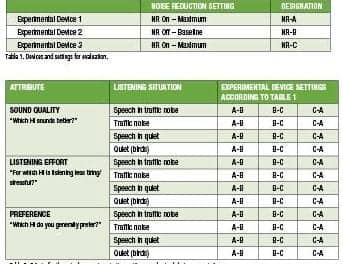|
Nancy Kent is president of Mindshare Creative, Santa Ana, Calif, and a consultant for CareCredit. She is the former president of Primelife, a marketing agency that specialized in creating uniquely effective marketing and training programs for companies with products or services targeting consumers age 40 and older. |
Through repetition and commitment from your entire team, communication can be dramatically improved and you can help more patients get the hearing health they want and need.
Every time the telephone rings, there’s an opportunity to help patients improve their hearing health and their lifestyle. As we learned in the first two articles (see August and September HR) of this three-part series, mastering exceptional telephone skills can help you optimize opportunity and convert callers into patients. In this final article, we will learn how to answer patients’ questions on cost using the VIP Technique.
When Patients Ask Questions
Two of the most common questions patients ask revolve around the topic of money. Unfortunately, money is often difficult to discuss—and the conversation becomes even more uncomfortable when the discussion is about health care and money. Even though health care providers and their teams have a deep desire to help patients, they also need to be paid appropriately for their services.
It’s important to understand that when people ask questions about cost, it is not the actual cost that is an issue with them. There may be underlying concerns or questions that have not been satisfactorily answered. There is a saying, “Cost is rarely the reason, but often the excuse.” The underlying reason may be fear, confusion, denial, or misinformation. The key is to ask the right questions that uncover true concern.
During the initial telephone call, the practice has had little opportunity to establish the value of its services, especially if the first sentence out of the caller’s mouth is “how much does a hearing aid cost?” The good news is that, when a caller is asking questions, it means they are interested in what you have to say.
So, the first thing to do is to answer their questions. Do not try to avoid the topic of money. That just makes you seem unsure, secretive, or deceptive. In the following conversation, the caller’s first question is about cost. Let’s see how the office staff member takes control of the conversation and begins to uncover the patient’s knowledge level and perceptions of value.
Office Staff: Good morning, XYZ Hearing. This is Pam. How can I help you?
Caller: How much do your hearing aids cost?
Pam: Our hearing aids range in price from $900 to several thousand depending on the technology. May I ask your name?”
Caller: “My name is Betty.”
Pam: Betty, are you calling for yourself or for a loved one?”
Betty: I’m calling for my husband.
Pam: Well, Betty, it sounds like you might be unfamiliar or confused with the cost of hearing aids. Is that true?
Betty: No … I know how much they cost. We were told my husband needs a hearing aid that costs $3,500! So, I wanted to see how much yours were.
Pam: Well, Betty, it seems you and your husband are concerned with his hearing loss and want to find the right instrument to fit his specific needs. Did your husband go through a hearing evaluation?
Betty: Yes, he did.
Pam: And the doctor you went to recommended a specific hearing instrument?
Betty: Yes.
Pam: Do you think $3,500 is too much to pay for a high-quality hearing instrument that will allow your husband to attain the best hearing health he can?
Betty: Well, no. But we’re not even sure he’s going to like them. I don’t want to pay $3,500 for something he’ll end up putting in a drawer like his friend Frank did with his hearing aids.
In this example, Pam was able to uncover why the caller was asking about price, which wasn’t an objection to the cost of hearing instruments, but the concern that the hearing instrument would not work and would not be used—and their money would be wasted. She was also able to determine who the patient actually was and begins to build rapport, empathy, and a foundation of trust.
Of course there are times when cost truly is the concern. As we know, the average hearing instrument user is retired and on a fixed income. But one of the biggest myths about the mature market is that they are “cheap.” The reality is they will invest in any product or service that enhances their lifestyle—and provides value.
It’s when they are unable to easily determine value that they become hesitant on making the purchase.
Using the VIP Technique
When any patient has concerns with cost, using the VIP Technique can help you turn the caller into an appointment. The VIP Technique is:
Verify value not cost
Instill confidence
Provide payment options
After you have uncovered the patient’s real concerns with cost and provided information or payment solutions, you need to verify the value you offer, instead of focusing on price. A significant portion of the “product” you offer is expertise and service. That means that hearing aids are not a commodity to be sold on price alone. Your expertise and service are what differentiate you from a competitor and what create loyal customers who refer family and friends.
You also need to instill confidence in the caller. Confidence breeds trust, which is the foundation for all strong patient/provider relationships. Patients must feel confident not only in your clinical ability, but also in your ability to make them feel comfortable and cared for. This can be difficult to do if you have only a few minutes with the patient on the phone.
Finally, if cost concerns have been discussed, provide payment plans through an outside patient financing program, such as CareCredit. If you limit their payment options, you’re limiting their ability to say yes.
Here is an example of a call using the VIP Technique.
Office staff: Good morning, XYZ Hearing. This is Pam. How can I help you?
Caller: How much do your hearing aids cost?
Pam: Our hearing aids range in price from $900 to several thousand depending on the technology. May I ask your name?
Caller: My name is Betty.
Pam: Betty, are you calling for yourself or for a loved one?
Betty: I’m calling for my husband.
Pam: Well, Betty, it sounds like you might be unfamiliar or confused with the cost of hearing aids. Is that true?
Betty: No…I know how much they cost. We were told my husband needs a hearing aid that costs $3,500! So, I wanted to see how much yours were.”
Pam: Well, Betty, is seems you and your husband are concerned with his hearing loss and want to find the right instrument to fit his specific needs. Did your husband go through a hearing evaluation?
Betty: Yes, he did.
Pam: And the doctor you went to recommended a specific hearing instrument?
Betty: Yes.
Pam: Do you think $3,500 is too much to pay for a high-quality hearing instrument that will allow your husband to attain the best hearing health he can?
Betty: No, but I’m sure I can find the same hearing aids for less money.
Pam: Well, Betty, it is important that you get the best value for your money, and we’re committed to finding patients exactly the right hearing aid at the right cost so you’re happy with your investment. Dr Jones will review your husband’s test results and give him the hearing aid options that fit his specific needs. That may include the instrument your other hearing care provider recommended. Or he may have other options for you to consider. I’m sure you know Dr Jones is one of the most respected hearing care professionals in town. We’ve been serving this community for over 20 years so you probably know many of our patients.
We’re also committed to making your hearing aid investment fit into your budget. We offer convenient no-interest and low-interest payment plans. Patients tell me being able to pay over time made it easy for them to get the best hearing health possible. The next step is to give Dr Jones the opportunity to review your husband’s hearing test to determine which hearing instrument provides you with the best value.
In this 30-second script, Pam was able to begin establishing value and begin taking the focus off of price. She was also able to communicate to Betty how well respected Dr Jones is, instilling trust and confidence in his expertise and experience. And finally, she made hearing aids accessible by offering comfortable payment options. Now it’s time to end the call by asking for the appointment.
This simple dialogue is often overlooked, yet it is critical to turning the caller into an appointment. Quite simply, at the end of the call, you need to give patients the opportunity to say “yes” by giving them easy choices that lead to your desired outcome—a third-party appointment. One key to effectively closing the call is to give patients options or choices of appointment dates and times, limiting the options to two to minimize confusion.
“Betty, I know Dr Jones can help your husband and provide options that fit comfortably in your budget. The next step is to meet Dr Jones. Is it more convenient for you and your husband to meet with him on Tuesday at 3 o’clock or on Wednesday at 10?”
Remember, if you don’t ask for the appointment, you won’t get the appointment. Using effective telephone communications techniques requires commitment and practice. Once you clearly understand that, when the telephone rings, it is the most important thing happening at that moment—and you take the time to not only hear, but truly listen to the caller—you’ll easily turn more callers into loyal, long-term patients.
You and the caller each have a goal. Their goals may vary, but yours is to schedule an appointment. You can reach your goal when you leverage the three key rules:
- Answering the phone in three rings using a three-part answer;
- Never placing a caller on hold without permission, and
- Always giving each call your full attention using active listening skills.
These techniques were detailed in the first two articles in this series and can be viewed in the HR Archives. Many of these skills and dialogues do not come naturally. However, through repetition and commitment from your entire team, communication can be dramatically improved and you can help more patients get the hearing health they want and need.
Correspondence can be addressed to HR at [email protected] or Nancy Kent at .
Citation for this article:
Kent N. Telephone skills 103: Answering patient questions about cost. Hearing Review. 2008;15(11):42-44.




